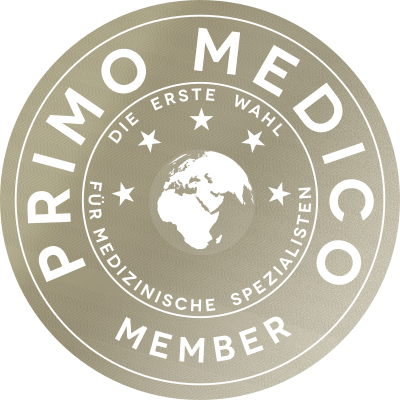Manual Lymph Drainage ad modum Dr. Vodder
This is a gentle, non-invasive manual technique that has a powerful effect on the body. Research in Australia, Europe and North America has proven its efficacy as a stand-alone treatment and in combination with other therapies. Developed in France in 1932 by Emil and Estrid Vodder MLD has grown to be the most well known manual technique to assist lymph flow and aid in drainage of tissues.
History of Dr. Emil Vodder and the Manual Lymph Drainage
Emil Vodder was born on 20 February 1896 in the old part of the city of Copenhagen. After completing his secondary education, he enrolled in university courses in drawing, art history and comparative language studies of ten languages. After that he worked at the Royal Nautical Charts Archives in Copenhagen for six years. As a hobby, he studied voice and the cello. He enrolled in biology, mineralogy and botanic courses at the Copenhagen University, while also studying medicine, cytology and microscopy. He took an early interest in physical medicine. He was forced to interrupt his medical studies in the eighth semester after he had contracted malaria, and was not readmitted to university to complete them. In 1928 he received his PhD from the University of Brussels (Belgium) for his doctoral thesis on art history. In 1929 he moved to the French Riviera with his wife Estrid, a non-medical practitioner. He launched a physiotherapy institute in Cannes, where he treated patients.
Emil Vodder took an early interest in the lymphatic system
He was well acquainted with the names and publications of past scientists who had written about the mysterious "clear fluid" centuries ago. In his Foreword to our first book Emil Vodder mentions almost all these names and includes references to their research, such as: THOMAS BARTHOLIN, a young Dane who enrolled at the University of Leyden in 1637. He was the first to describe the lymphatic system as a whole. In four papers, written in Latin, he emphasizes that the lymphatic system is a natural cleansing system that “trickles” through our bodies. He published his discovery of lymphatic vessels in the human body in a scientific study entitled “Vasa Lymphatica”. The study of relevant publications soon convinced Emil Vodder that humans were a biological unit. From the publications of Bernard, Carrel and Drinker he learned that the lymph fluid is omnipresent, and is thus an integral part of the environment necessary for human life.
“The lymphatic system is the most important organic system of human and animal life”, maintained Professor Drinker.
In 1929 Emil Vodder worked with patients, gathered experience and formulated hypotheses which sounded far-fetched in those days. In patients suffering from blemished skin, migraine or sinusitis he palpated swollen lymph nodes on the neck. His idea was that congestions in the swollen lymph glands (now nodes) were the root cause of these conditions. The lymph nodes were no longer able to fulfill their task of draining the tissue. He thought that one could eliminate such congestions by adequate massage like opening floodgates, thereby draining excess fluid and restoring normal conditions. A carefully applied technique of circular pumping strokes, of “working with the skin”, achieved the desired result. Emil Vodder’s pioneering feat – or recklessness, as others would call it – was that he treated swollen cervical lymph nodes although it was an absolute taboo in those days to as much as touch them. The complaints disappeared, and Emil Vodder asked himself whether he had discovered a successful universal therapy for the lymphatic syndrome.
In 1933 Emil and Estrid Vodder moved to Paris, where they continued their biological research.
The couple was particularly interested in the anatomy and physiology of the lymphovascular system. In an anatomical atlas the couple found copperplate illustrations by the anatomist Sappey (Description et iconographie des vaisseaux lymphatiques considerées chez l’homme et les vertébrés, Paris 1885). These illustrations were the essential background information for Emil Vodder in his attempts to develop, with intuition and many treatment trials, a systematic and clear working method. He realized that a completely new massage technique was required for this purpose, i.e. pumping circular strokes under very light pressure to avoid any increased blood flow. It is Vodder’s achievement to have created a technique of gentle hand strokes which enables therapists to respond to varying pathologies and do much good. In 1936 Emil Vodder presented his method, called DR. VODDER’S MANUAL LYMPH DRAINAGE, to the general public in Paris. After eleven years in France, the Vodders were forced to return to Copenhagen at the outbreak of World War II.
A new beginning under difficult circumstances
It was only in the early 1950s that Emil Vodder was invited by various European institutions to present his method through lectures and training courses. In 1966 Günther Wittlinger established first contacts with Emil Vodder. The problem at that time was that no physician or scientist was able to imagine that a manual technique could possibly have such impact on the lymphatic system. A milestone in proving the decongestive effect of MLD was a statement by Professor Mislin who maintained that the special technique of Dr. Vodder’s Manual Lymph Drainage, its gently circular movements and its increasing and decreasing pressure cause the lymphatic vessels – i.e. the lymphangions – of the skin to accelerate their rate of contraction. Mislin said: “If Vodder had not created this special method, we would have had to invent it.” This statement dates back to the 1970s. The Vodder method is simple but ingenious, difficult to learn but unique in its effect on patients. These gentle circular strokes are always responsive to the tissue being treated, and not only have a therapeutic effect but also induce a pleasant feeling of relaxation in patients. This effect was initially detrimental to the success of the method. It was dismissed as caressing, a comment which no MLD therapist was pleased to hear.
The method was denounced as quackery
This was a harsh word, in particular for those who were already using the method with great success. Scientists and their trials proved the effect of the method and eventually ensured the breakthrough and recognition of Dr. Vodder’s Manual Lymph Drainage. German health insurers began to cover MLD treatment. Hildegard and Günther Wittlinger met Emil Vodder many times and found him to be an educated and open-minded gentleman. He was both a teacher and a life inspiration to them. His words were motivating: “Our chief goal must be to find our way in life, to realize that it is our way and to follow it consistently.” Emil Vodder lived according to this tenet; in Günther Wittlinger he had found the kind of tireless champion he needed to ensure that the original method survived. Emil Vodder was awarded the Wilhelm Rohrbach Medal by the Physiotherapy Association (VPT) in 1985 in recognition of his lifetime achievement. By awarding this medal, a professional association also confirmed that Emil Vodder was the creator of the method named after him:
DR. VODDER’S MANUAL LYMPH DRAINAGE (MLD).
Emil Vodder died in February 1986 shortly before his 90th birthday in Copenhagen. A loyal companion for many years, his wife Estrid died ten years later at age 99. She had assisted her husband in training courses and accompanied him on many lecture tours. There are probably only a few individuals who have left such an indelible mark on physiotherapy as Emil Vodder. Many scientists, physicians and therapists have helped disseminate a method invented more than 75 years ago and thus ensure MLD’s worldwide recognition and use in medicine and physiotherapy.





